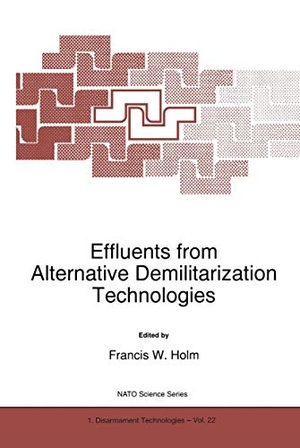Für statistische Zwecke und um bestmögliche Funktionalität zu bieten, speichert diese Website Cookies auf Ihrem Gerät. Das Speichern von Cookies kann in den Browser-Einstellungen deaktiviert werden. Wenn Sie die Website weiter nutzen, stimmen Sie der Verwendung von Cookies zu.
Cookie akzeptieren
Effluents from Alternative Demilitarization Technologies
- Springer Netherlands
- 1998
- Taschenbuch
- 236 Seiten
- ISBN 9780792352549
FRANCIS W. HOLM 30 Agua Sarca Road, Placitas, New Mexico 1. Overview The North Atlantic Treaty Organization (NATO) sponsored an Advanced Research in Prague, Czech Republic, on October 13-15, 1997, to collect and Workshop (ARW) study information on effluents from alternative demilitarization technologies and to report on these fmdings. The effluents, orprocess residues, identified for assessment at the workshop are generated by systems that have been proposed as alternatives to incineration technology for destruction of munitions, chemical warfare agent, and associated materials and debris. The alternative technologies analyzed are grouped into three categories based on process bulk operating temperature: low (0-200 C), medium (200-600 C), and
Mehr
Weniger
zzgl. Versand
in Kürze